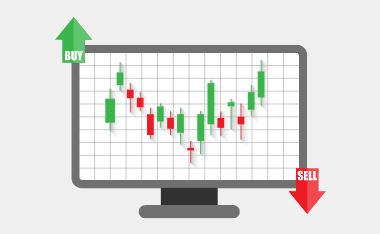How to Understand if Forex Day Trading or Swing Trading Suits Your Trading Style

One of the benefits of trading the forex market is the opportunity for traders to employ various strategies to navigate the market’s volatility and profit from currency movements.
Two of the most popular approaches are day trading and swing trading.
While both methods can be effective, day trading often provides benefits that might appeal to traders seeking more immediate results.
This article will explore the differences and similarities between forex day trading and swing trading, highlighting the strengths of each.
Understanding Forex Day Trading
Day trading in the forex market involves the buying and selling of currency pairs within the same trading day.
Traders aim to take advantage of small price movements by executing multiple trades throughout the day. Importantly, all positions are closed before the market closes, helping traders avoid overnight risks.
Key Advantages of Day Trading:
- Short-Term Profit Potential: One of the appealing aspects of day trading is the ability to generate profits relatively quickly. Traders can capitalise on intraday price movements, potentially making several high probability short-term profit trades a day. This active trading can lead to a steady accumulation of gains, appealing to those who prefer not to wait long periods to see results.
- Reduced Overnight Risk: By closing all trades before the end of the trading day, day traders avoid the unpredictability of overnight events. This practice eliminates the risk of market gaps caused by news or economic events that occur after hours, offering peace of mind and more control over trading outcomes. Many a trading account has been decimated by unexpected overnight announcements!
- High Liquidity: The forex market’s high liquidity is particularly advantageous for day traders, enabling them to enter and exit positions quickly. This ease of transaction helps to minimise slippage, ensuring trades are executed at the desired price, even when trading large volumes.
- Continuous Feedback and Skill Development: Day trading allows traders to quickly gauge the effectiveness of their strategies. With each trade offering immediate results, traders can rapidly learn and adapt, leading to faster skill development compared to strategies that involve holding positions over longer periods.
- Engagement and Activity: For those who produce their best results by being in action, day trading offers daily engagement with the market. The active nature of day trading can be highly stimulating, providing opportunities to refine strategies and stay closely connected to market trends.
Understanding Forex Swing Trading
Swing trading, in contrast, involves holding positions for several days to weeks, aiming to profit from medium-term price trends.
This strategy allows traders to capture larger price movements within a broader trend, though it also requires more patience, discipline and long-term analysis than day trading.
Key Advantages of Swing Trading:
- Longer Trade Duration: Swing traders benefit from holding positions over several days, allowing them to capture more significant price movements. This longer duration can lead to potentially larger profits per trade, appealing to those who prefer a slower pace.
- Reduced Daily Time Commitment: Generally speaking, swing trading does not require constant market monitoring. Traders can analyse the market once or twice a day, making it a suitable option for those with major time commitments.
- Broader Analytical Focus: Swing traders often use a combination of technical and fundamental analysis, a this strategy often requires a substantially greater comprehensive view of the market. This approach is needed to identify and manage long-term trends and potential reversals, with a reliance on consistent well-informed trading decisions.
- Potential for Larger Gains: By targeting medium-term trends, swing traders can capture more significant price movements over a longer period of time. This potential for larger gains on individual trades is a key draw for those who are patient enough to have their funds locked in a trade, waiting for the right opportunities to produce results.
- Lower Transaction Costs: Because swing traders execute fewer trades, they may incur lower transaction costs compared to day traders. This can be beneficial for traders who prefer to limit their trading expenses while still seeking meaningful returns.
Day Trading vs. Swing Trading: Key Differences
1. Time Commitment: Day trading requires a regular time commitment, actively engaging with the market throughout the strongest sessions of the trading day.
This level of involvement allows for quick responses to market changes but requires focus.
Swing trading, on the other hand, is more suited for traders who value convenience over compounded profits.
2. Trade Duration: The duration of trades is another critical difference.
Day traders typically hold positions for minutes to hours, closing all trades by the end of the day.
Swing traders, in contrast, hold positions for days or even weeks, trying to ride medium-term trends and capture larger price movements. It is up to the trader to decide if they value liquidity over the potential to make less, but potentially larger profits.
3. Risk and Reward Profile: Day trading often involves targeting smaller profits on each trade, but the higher frequency of trades can lead to a steady accumulation of gains.
The reduced exposure to overnight risk also makes day trading appealing to those who prefer to manage risk more closely.
Day trading allows the trade to multiply their funds consistently in the smaller market movements within multiple price cycles in a longer term movement, often adding greater gains long term compared to staying in one trade for a larger, longer term price run.
Swing trading, while offering the potential for larger gains on individual trades, comes with the added risk of holding positions overnight, where market gaps can lead to unexpected losses.
4. Analytical Approach: Day traders typically base decisions more on technical analysis and short-term indicators, focusing on minute-to-minute and hour-to-hour price action to make shorter term decisions.
Swing traders, however, take a broader view, requiring both technical and fundamental analysis to identify longer-term trends.
This difference in approach reflects the distinct time frames and objectives of each strategy.
5. Psychological Demands: Day trading’s fast pace benefits traders who stay focused and disciplined, keeping emotional neutrality and making intelligent decisions.
While this can be challenging for some, it also offers the satisfaction of seeing results quickly.
Including Mindset Management techniques in your trading method application can help traders be in the best position to manage these conditions.
Swing trading demands patience and the ability to withstand market fluctuations over longer periods with the potential for much greater drawback, which can be difficult for traders who prefer more immediate feedback and don’t want to see constant negative values in their trade management.
Balancing the Benefits
While both day trading and swing trading offer unique advantages, day trading often stands out for those who seek more short-term consistent, risk-managed immediate results and greater control over their trading activities.
The ability to capitalise on short-term price movements, combined with the reduced risk of holding positions overnight, makes day trading an attractive option for many traders.
1. Faster Learning Curve: The frequent trades associated with day trading provides more opportunities to learn and refine strategies in real-time. The timely feedback allows traders to quickly adapt and improve, leading to a steeper learning curve compared to swing trading, where trades are less frequent.
2. Greater Control Over Risk: Day trading offers greater control over risk management. By closing all positions before the market closes, day traders eliminate the uncertainty associated with overnight positions. This approach allows for a more predictable trading environment, which can be particularly beneficial for those who prioritise risk management.
3. Maximising Daily Opportunities: The forex market is constantly offering new opportunities, and day traders are well-positioned to take advantage of these frequent movements. The ability to respond to market changes can lead to more consistent profits, as day traders are not dependent on long-term trends that may take time to develop, or be affected by changing economic circumstances.
4. Clear Start and End to the Trading Day: For many traders, the clear start and end to the trading day is a psychological benefit. By closing all trades at the end of the day, day traders can begin each new day with a fresh perspective, free from the stress of overnight positions.
5. Active Participation in the Market: Day trading allows traders to stay actively engaged with the market, providing constant opportunities to test and refine strategies. This active participation can be particularly rewarding for those who enjoy the challenge of navigating the forex market’s daily fluctuations.
The Final Word on Forex Day Trading Versus Swing Trading
Forex trading offers various strategies, each with its own merits.
Swing trading provides a more relaxed approach, with the potential for larger gains per trade and a lower daily time commitment, but potential for large drawbacks and less liquidity.
However, for those seeking shorter-term results they can leverage into a growing account, greater control over risk, and the opportunity to continuously refine their skills, day trading may offer an edge.
Ultimately, the choice between day trading and swing trading depends on individual goals, risk tolerance, and lifestyle preferences.
Understanding the strengths and challenges of each strategy can help traders make an informed decision that aligns with their trading objectives.
Disclaimer
The information in this article is intended to be general information in nature and is NOT general financial product advice, nor personal financial product advice.
It does not take into account your objectives, financial situation or needs.
Past performance is not necessarily indicative of future performance.
Any results on our website, including this page, are illustrative of concepts only and should not be considered average results, or promises for actual or future performance.
The Trading Coach International does not operate under an Australian Financial Services Licence (AFSL), as the services we provide do not require one.
Speak with your registered financial advisor before making any financial decisions.




















